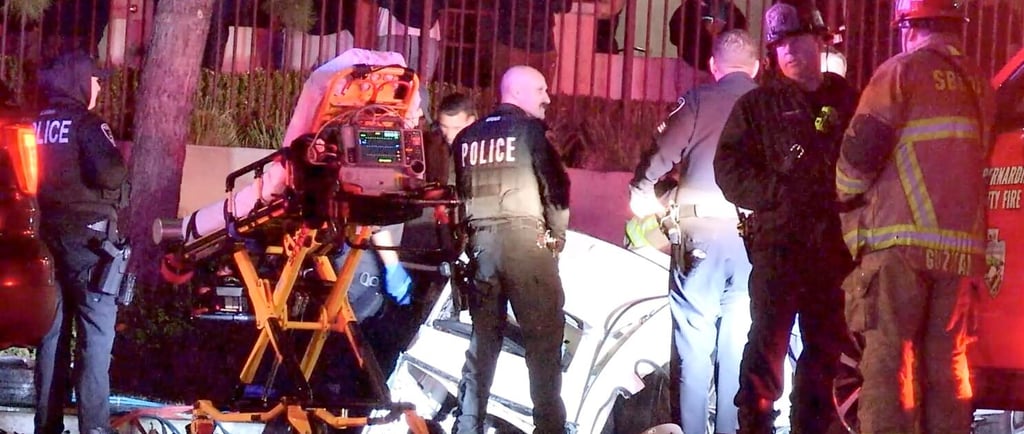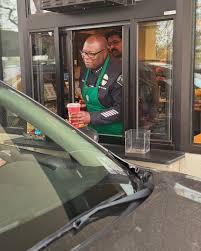Did Lack of Training At Simi Valley Police Department Cause Serious Injury To 3 Teens
OPINIONFEATURED


Did Poor Judgment by Simi Valley PD Lead to Critical Injuries to Teens During Car Chase?
Three teenagers, aged 13 and 14, were critically injured in a car crash during a car chase with Simi Valley Police after what began as a simple traffic stop. At approximately 2 a.m., patrol officers spotted a vehicle driving without headlights, attempted to pull it over, and subsequently initiated a pursuit when the driver fled. What followed raises serious questions about police judgment and public safety priorities at the Simi Valley Police Department.
During this high-speed chase, the vehicle—later discovered to be stolen—lost control and violently rolled over near First and Flower Glen streets, almost one-and-a-half miles from where the pursuit started. Consequently, all three teens sustained "significant" injuries requiring transport to a local trauma center.
How do three teenagers end up in a mangled vehicle after being chased by Simi Valley Police? Did the teens sustain preventable injuries if the Simi Valley Police had utilized better discretion? Has Simi Valley Police Chief Steven Shorts ensured that Officers have proper training to protect the residents of Simi Valley? . Although the teens now face charges including possession of a stolen vehicle and felony evading, we need to question if SVPD's decision to engage in a high-speed pursuit was worth the risk to young lives, regardless of suspected criminal activity.
Did Simi Valley Police use Poor Discretion to initiate the Chase on City Streets?
The pursuit that led to three teenagers suffering significant injuries raises troubling questions about police discretion. Research shows that approximately 75% of fleeing suspects report they would slow down within about two blocks in town once police terminated pursuit. According to the FBI Law Enforcement Bulletin, "Because knowledge of suspects' behavior is limited to anecdotal information from officers and empirical data from the suspects themselves, four researchers conducted a study as part of a grant from the National Institute of Justice, wherein they interviewed suspects who had fled from the police. Their effort, the first systematic study to quantify the perceptions of suspects involved in pursuits, provided information on a variety of topics, including the demographics of those who fled from the police (their average age was 26, and 94 percent were male), as well as what happened (30 percent of the suspects crashed, 30 percent stopped, and 25 percent outran the police) and why they fled (32 percent were driving a stolen car, 27 percent had a suspended driver's license, 27 percent wanted to avoid arrest, and 21 percent were driving under the influence).
One of the more interesting findings from the suspects concerned their willingness to slow down when the police stopped chasing them. Approximately 75 percent reported that they would slow down when they felt safe. They explained that on average, they would have "to be free from the police show of authority by emergency lights or siren for approximately two blocks in town...and 2.5 miles on a freeway." In other words, suspects who have fled from the police report that they will slow down within a reasonable period once the officer terminates the pursuit.
Officers Spot Car without headlights at 2 a.m.
The incident began with what might seem routine—officers observed a vehicle traveling without headlights near Erringer Road and Cochran Street shortly before 2 a.m. Upon running the license plates, SVPD discovered the Car had been reported stolen.
The chase ended abruptly when the driver lost control, causing the vehicle to roll over near First and Flower Glen Streets. Inside were three female juveniles—a 13-year-old and two 14-year-old girls—all of whom sustained serious injuries requiring immediate transportation to a trauma center.
Simi Valley Police Decision to Engage in a Car Chase With Teens at the Wheel Compromises Public Safety
This situation requires careful judgment by the Simi Valley Police Department, which was clearly according to police pursuit research, most pursuits begin with a traffic violation, yet this seemingly minor infraction escalated into a life-threatening situation. Experts emphasize that "officers must not forget that the immediate apprehension of a suspect is generally not more important than the safety of the public and pursuing officers." Notably, research indicates one person dies every day as a result of police pursuits, with innocent bystanders constituting 42% of persons killed or injured.
Given these statistics, law enforcement agencies nationwide are urged to weigh several critical factors before initiating pursuits, including "the safety of the public in the area of the pursuit, time of day, and the speed of the pursuit relative to these factors" In fact, model policies advocate limiting pursuits to violent felonies and especially dangerous driving offenses.
The Simi Valley Police Department is not a model agency. Under the leadership of Steven Shorts, the Simi Valley Police Department has unfortunately transformed into a troubling example of neglect when it comes to public safety, posing a significant danger to Middle School Age Children. Lack of police oversight of the Simi Valley Police Department by the Simi Valley City Council and City Manager Samantha C. Argabrite appears to have made the Simi Valley Police Department a dumping ground for undertreained, irresponsible, and substandard policing.
While it is true that there is no acceptable excuse for 13 and 14-year-old children to engage in the act of stealing a car and going for a joy ride, it is equally important to emphasize that these young individuals should not be seriously injured by police officers who are poorly trained and therefore unable to respond proportionally and appropriately to various situations that arise.
This incident underscores the failures of Simi Valley Police Chief Steve Shorts and the urgent need for the implementation of stricter pursuit protocols, particularly in cases involving non-violent offenses that include minors. Unfortunately, Simi Valley's newly appointed City Manager, Samantha C. Argabrite, does not appear to be concerned with the poor judgment exhibited by the Simi Valley Police, which ultimately resulted in serious injury to school-age children.
How pursuit tactics may have escalated the danger
The pursuit tactics employed during the Simi Valley incident reveal concerning patterns that likely increased the danger to all involved in this high-stakes situation. Police pursuit data presents a sobering reality that cannot be ignored: one person dies every day as a result of police pursuits, and innocent third parties constitute a staggering 42% of persons killed or injured in such incidents. This alarming statistic underscores the critical need for oversight of the actions of Simi Valley Police, potentially the termination of SVPF Chief Steven Shorts, and the reevaluation of pursuit policies to ensure the safety of everyone on the road.
More alarming is that research indicates that fleeing suspects typically continue driving dangerously for only about 90 seconds after police terminate pursuit. The Simi Valley Police are undertrained on this fact. Approximately 75% of suspects report slowing down once they feel safe from police, typically after about two blocks in town. This crucial information suggests that if the Simi Valley Police Officers had backed off, they could have prevented the violent crash. Yet the undertrained Simi Valley Police made the incorrect decision to endanger the suspects and the Public.
High-speed pursuits almost universally increase danger rather than mitigate it, creating a significant risk to public safety. Statistics show that 1 out of every 100 high-speed pursuits results in a fatality. When these high-speed pursuits occur near residential areas or commercial centers, such as the Simi Valley Town Center, these risks multiply exponentially, endangering innocent bystanders and potentially leading to catastrophic consequences.
City Manager Samantha C. Argabrite Needs to Require Chief Shorts to Implement Pursuit Policies
Many law enforcement agencies have implemented stricter pursuit policies specifically because the dangers often outweigh the benefits, but this does not seem to be the case at the Simi Valley Police Department. These policies typically emphasize:
Terminating pursuits when risks outweigh the need for immediate apprehension
Prohibiting dangerous tactics like roadblocks and ramming
Using alternative methods, such as tire deflation devices, when appropriate
Considering key factors, including suspect speed, road conditions, and population density
The California Highway Patrol reported a staggering total of 12,513 police pursuits throughout the vast state in a single year, which tragically resulted in 52 deaths and 1,467 injuries [8]. These alarming numbers represent lives profoundly impacted by the decisions made during these high-stakes situations.
Law enforcement experts increasingly recognize that allowing suspects to escape temporarily is often safer than continuing dangerous pursuits, particularly for non-violent offenses, as this approach minimizes the risk of harm to the officers involved and the Public. In the specific Simi Valley case, officers likely had several alternatives available that could have effectively prevented severe injuries to the teenage occupants involved in the incident. Still, undertrained SVPD officers, in turn, opted to endanger the teen drivers and the Public's Safety.
Simi Valley City Manager Samantha C. Argabrite and Chief Steven Shorts are Responsible for training Simi Valley Police.
Chief Steven Shorts, who now leads the Simi Valley Police Department, once criticized another agency's incident as showing "clearly a lack of training, a lack of supervision... no strategic thinking". Ironically, these same criticisms might apply to SVPD's handling of the pursuit that left three teenage girls critically injured.
Simi Valley Police Chief Short Serves Coffee Rather Than Training Officers
Training deficiencies become apparent when examining this case against established pursuit research. SVPD's decision to chase teens for driving without headlights contradicts expert guidance that pursuits should be limited to violent offenses. A comprehensive Department of Justice National Institute of Justice study determined that "further initial and continuing training is needed on the issues involved" in police pursuits nationwide.
Most concerning is that despite Chief Shorts' public emphasis that "it's important for agencies to have solid policies and procedures in place and regular training for officers", the Simi Valley Police Department appears to have proceeded against best practices.
National data underscores how proper training could have prevented this outcome. Studies show preservice recruits erroneously believe 61% of pursuits end in crashes [1], potentially creating an acceptance of high crash rates. In reality, research demonstrates suspects typically continue dangerous driving for only about 90 seconds after police terminate pursuit, suggesting proper training on termination protocols could have prevented this crash.
The incident highlights that the Simi Valley Police Chief has failed to provide systemic risk assessment training. More concerning is whether Simi Valley Police can serve the Public safely.
While most agencies have written pursuit policies, many were implemented decades ago and never updated. Given that approximately 35-40% of all pursuits result in crashes [1], and that minor offenses constitute most pursuits, training emphasizing public safety over apprehension becomes crucial.
At this point, questions remain whether SVPD's training under Chief Shorts adequately prepared officers to make split-second decisions that prioritize safety over apprehension, especially involving minors at 2 a.m. for non-violent offenses.
Should Simi Valley PD have safely followed the teens until they stopped the vehicle?
Modern law enforcement agencies nationwide have adopted safer alternatives that could have prevented the teens' injuries in this Simi Valley incident. Tracking technology, rather than high-speed pursuit, presents a safer option for officers and suspects.
Research demonstrates that most suspects slow down within 10 miles of the posted speed limit in less than 2 minutes once police terminate active pursuit [10]. Field testing of vehicle tracking systems found zero injuries, fatalities, or property damage across all case studies reviewed, with an impressive 80 percent apprehension rate for suspects in tagged vehicles.
One effective system, StarChase, allows officers to "tag" fleeing vehicles with GPS tracking devices using laser targeting and compressed air technology. This enables police to track suspects safely without dangerous high-speed chases. Officers can request that dispatchers contact services like OnStar to remotely slow vehicles equipped with such technology.
The Hillsborough County Sheriff's Office developed another effective program: the Vehicle Intercept Program. This program uses unmarked police vehicles to block suspects who are slowing or stopping. This method works because "most suspects in vehicles will not flee as long as police officers keep their lights and sirens off."
Potential for civil liability for Simi Valley PD under Vehicle Code §17004.7C
In 2020, Shelley Padalecki was hurt in a police chase that ended with a crash. The police chase occurred when a vehicle was being pursued, and during the pursuit, it crashed, causing injury to Padalecki. According to another Los Angeles Times article, Simi Valley later paid $320,000 to settle a lawsuit related to Padalecki's injuries.
In this case, police could have safely followed at a distance without emergency lights and sirens, tracked the vehicle, or identified the teens for later apprehension – options that likely would have prevented critical injuries to the juveniles.
California Vehicle Code §17004.7 provides a significant level of immunity for law enforcement departments that have established pursuit policies that meet strict and specific requirements. However, it is essential that this immunity applies only when these departments implement comprehensive and detailed guidelines that effectively address critical areas such as supervisory control, vehicle designation procedures, and establishing clear and precise criteria for initiating and terminating pursuits. Essentially, pursuit-related injuries frequently trigger the filing of six-month government tort claims, with courts meticulously examining whether the policies in place included proper balancing tests that weigh "the need for apprehension versus risk created by the pursuit".
Conclusion
The crash that seriously injured three children was caused by the Simi Valley police chase, highlighting numerous concerning details about a pursuit that left three teenage girls critically injured. Above all, the evidence points to a significant failure in risk assessment by Simi Valley Police when officers decided to initiate a high-speed chase for a vehicle driving without headlights. Statistics demonstrate that approximately 75% of suspects slow down shortly after police terminate pursuit, making the potential injuries entirely preventable.
The location of the crash near residential areas and the Simi Valley Town Center further highlights the questionable judgment exercised by the Simi Valley Police Department that night. Though the incident occurred at 2 a.m., the risk to public safety remained substantial, especially considering that one person dies daily from police pursuits nationwide.
Alternative approaches certainly existed. Law enforcement agencies nationwide have successfully implemented tracking technologies and less aggressive following techniques that achieve suspect apprehension without endangering lives. Meanwhile, Chief Steven Shorts' own words about proper training and strategic thinking seem at odds with his department's actions during this incident.
Simi Valley Police need to use better discretion in the interest of public safety—a responsibility that extends from patrol officers to leadership and ultimately to city management. Undoubtedly, this incident should trigger a comprehensive review by Simi Valley City Manager Samantha C. Argabrite of the department's pursuit policies, training protocols, and supervision standards.
Simi Valley City Manager Samantha Agrabright
Until departments like Simi Valley PD, Police Chief Steve Shorts, and City Manager Samantha C. Argabrite consistently prioritize public safety over immediate apprehension for minor offenses, especially when juveniles are involved, these preventable tragedies will continue. A fundamental shift in pursuit philosophy must happen in Simi Valley, to one that genuinely balances the need for law enforcement with the paramount duty to protect all community members from unnecessary harm.




